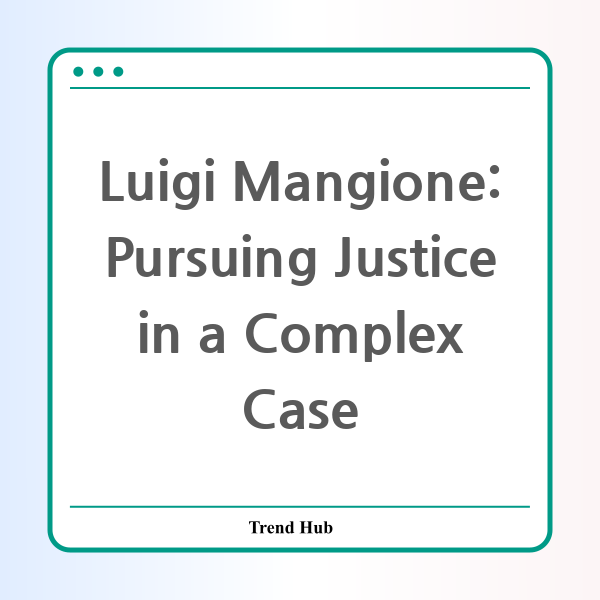* This website participates in the Amazon Affiliate Program and earns from qualifying purchases.

What drives a person to commit such heinous acts as stalking and murder? This troubling question lies at the heart of the case against Luigi Mangione, a young man accused of taking the life of Brian Thompson in a shocking act of violence in midtown Manhattan. Attorney General Pam Bondi has announced her directives for federal prosecutors to pursue the death penalty for Mangione, a move that signals the gravity of the charges against him and the broader implications for society.
Last December, Luigi Mangione, only 26 years old at the time of his arrest, was federally charged with the stalking and murder of Brian Thompson, the CEO of a health care company, who was tragically shot in a public area. This incident ignited a nationwide conversation regarding public safety and the enduring threats posed by violent crime. Bondi, in her remarks, aligned this pursuit of the death penalty with the current administration’s agenda on crime, specifically aimed at fostering a safer environment for citizens.
Thompson’s murder not only shocked the nation but also highlighted the vulnerabilities present within our healthcare system, as details emerged regarding Mangione's struggles with chronic back pain following spinal surgery. An account linked to Mangione revealed that he was uninsured at the time of the tragic shooting. This situation brings to the forefront the complex interplay between mental health, access to care, and violent behavior — a conversation that is crucial in understanding the motivations behind such crimes.
The timeline of events surrounding Thompson’s murder is gripping. It began on December 4, when Thompson was fatally shot outside the New York Hilton Midtown as he attended an investors' meeting. Witnesses reported seeing a masked gunman flee on a bicycle, and the subsequent manhunt captured public interest. Just days later, a diligent worker at a McDonald’s recognized Mangione from police images, leading to his arrest in Pennsylvania. This moment marked a dramatic turn in a case that had captivated the nation.
Investigators found Mangione in possession of a ghost gun, multiple fake IDs, and a handwritten document that purportedly detailed his motivations and mindset. Police confirmed that the shell casings from the firearm matched those found at the crime scene, strengthening the case against him. As of now, Mangione awaits trial, having pleaded not guilty to all charges, maintaining a position of innocence amidst serious allegations.
The trial will not only serve as a platform for justice for Brian Thompson but also as a reflection of societal issues concerning mental health, gun control, and public safety. If convicted of murder in the first degree, Mangione faces life imprisonment without the possibility of parole under state charges. The deliberations on whether to pursue the death penalty at the federal level add another layer of complexity, as both federal and state prosecutors navigate their cases through the legal system.
In conclusion, the case surrounding Luigi Mangione is not merely about one individual’s alleged crime but rather encompasses a spectrum of societal concerns that go beyond the courtroom. The outcome of this case may set important precedents regarding how the justice system addresses violent crime, mental health issues, and the rights of individuals. As we watch this case unfold, we must reflect on the underlying issues that contribute to such tragic events, advocating for solutions that can help prevent future occurrences.
* This website participates in the Amazon Affiliate Program and earns from qualifying purchases.